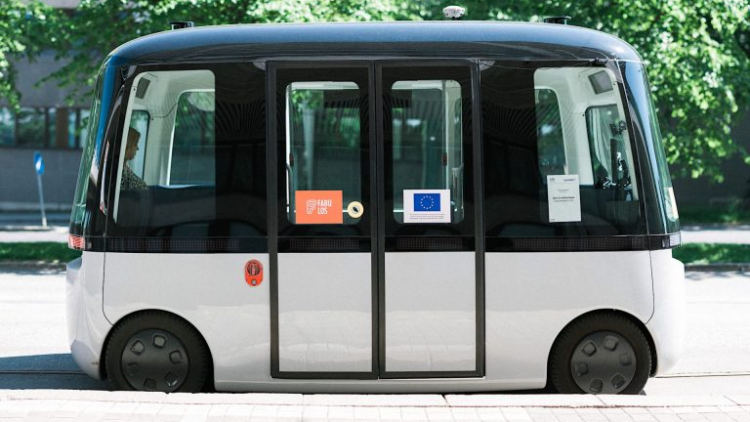Helsinki: Piloting an autonomous shuttle

The Challenge
FABULOS (Future Automated Bus Urban Level Operation Systems) focused on how cities can use automated buses in a systematic way. The goal was to procure the operations of autonomous bus lines and to accelerate the introduction of new types of automated last-mile solutions entering the European market. Self-driving minibuses had already been tested in technical demonstrations in various countries, but a proof-of-concept for the management of autonomous fleets as part of the public transportation provision was not yet available.
The Solution
The solution’s aim was to test efficient and environmentally friendly last-mile autonomous vehicles making sure that the offered solution is realistic and a commercially attractive alternative to traditional urban public transportation.
Six pilots were carried out in 5 different cities. For the Helsinki pilot, the fleet consisted of three vehicles: the GACHA shuttle bus, a Renault Twizy and a Dongfeng CM7 retrofitted with necessary equipment and sensors for automated driving. The vehicles drove along a circular route in Eastern Pasila, going from the Pasila station next to the Mall of Tripla, then turning north to circle back to Messukeskus Fair centre.
The vehicle and software provider was Sensible4 from Finland. The pilot coordinator was Forum Virium Helsinki.
The pilot was carried out in the following phases:
- Phase 1 Solution Design: five commercial consortia were selected to prepare a concept and feasibility study.
- Phase 2 Prototype Development and Lab Testing: four suppliers were selected that transformed the most promising ideas into well-defined and functional prototypes, validated into a technical test laboratory against the requirements defined in the Functional Specifications.
- Phase 3 Field Testing: three suppliers were selected. They tested the prototype solutions in real-life conditions, based on the Functional Specifications set by the Procuring Partners.

Making an impact
Field testing in FABULOS presented the opportunity for the first time in Finland to demonstrate a complete automated bus service system with both automated vehicles and relevant background functions (e.g. remote control centre) in open road conditions, driving regular speeds. The route itself was quite short (circa 1,2 km) but offered a selection of different kinds of intersections such as roundabouts as well as intersections with traffic lights, hence having the possibility of testing the functions under varying conditions.
- During the pilot a total of 1,026km were driven serving 187 passengers (low number due to COVID pandemic).
- The bus on average travelled at 20km/hr and had a maximum operating speed of 28km/hr.
- Almost fully automated driving until the last 4 weeks of pilot when automated driving dropped to 80% since road construction/bridge construction site covered 20% of the route and it had to be passed manually to guarantee safety.
- For the first time in Europe, the fleet was monitored from a newly established Remote Control Centre.
- The pilot service was integrated to the Helsinki Regional Transport (HSL) Journey Planner app and had an official line number (29R). Establishing a route with an official HSL route number can be seen as a major step towards the integration of automated solutions in the city’s public transport.
The Final Review Report from the European Commission stated that "The FABULOS project delivered exceptional results with immediate impact. As part of the

Lessons learnt
- Part of the pilot’s success was down to co-operation of city officials as well as national road authorities who are supportive of testing new innovations in urban mobility.
- All relevant parties should be involved in route planning to minimise the risk of unforeseen events such as roadworks.
- Large scale implementation in the city should focus on areas where public transport is not already comprehensive and/or where there is a good potential on affecting private car users while increasing the modal share of public transport. In addition, there are many areas which are covered by the public transport network, but with a low service level only. There, automation can improve public transport user experience (frequent service during the entire day) and can encourage shared mobility.
- To test and commercialise autonomous vehicles legal requirements need to be adhered to, such as the provision of a number plate by the governing Highway Authority and adequate insurance. A fully commercial uptake of automated buses would require that the vehicles would be possible to type approve. Type approvals of automated vehicles are currently pending for EU regulations.
- It is possible to providing scalable solutions, in challenging geographic conditions such as 10% incline or winter weather.
- Ecosystem development and knowledge building are crucial, especially on municipality level.
- Digital infrastructure: Cities should help speed up shuttle deployments by offering smart traffic lights and open data for companies’ use (e.g. digital twin, 3D city model). API standards for V2I are not well-defined everywhere.








